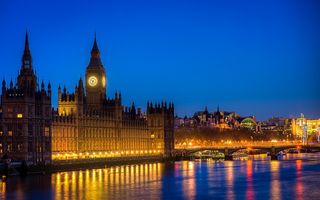Government publishes digital infrastructure map in bid to tackle mobile not spots
Whitehall hopes to improve connectivity by publishing map of the UK's current digital infrastructure

The government has pledged to tackle mobile not-spots' and improve connectivity across the country by publishing the very first map of the UK's digital infrastructure.
Whitehall hopes that releasing details of 13,000 miles of fibre optics cables, signal masts and public sector networks today will help address issues such as underused capacity and increase broadband access across the country.
The UK spends at least 1.5 billion a year on digital infrastructure, but the government has never had a complete view of it all.
This has meant that spare capacity has been missed, while public sector bodies have often wasted money duplicating networks.
However, a government report published today, the Interim Landscape Report, suggests that Whitehall can improve people's internet access by simply making better use of its existing infrastructure.
The report has published an "interim map" of this public infrastructure for the first time, detailing networks owned and leased by the government.
Speaking ahead of Sprint 15, the government's annual digital strategy conference, Cabinet Office minister Francis Maude said: "Our new maps reveal taxpayer-funded networks stretching right across the country.
Get the ITPro. daily newsletter
Receive our latest news, industry updates, featured resources and more. Sign up today to receive our FREE report on AI cyber crime & security - newly updated for 2024.
"We will work with providers to exploit spare capacity while joining up our own approach, so more people can access high-speed broadband and better mobile phone coverage."
Those networks include fibre running alongside railways, which Whitehall claims has significant spare capacity.
They also cover fibre running alongside motorways and a defence network providing secure voice, video and data across the UK.
In addition, there is the N3 network connecting health and social care sites, as well as the fixed fibre network JANET, which links up universities and colleges.
As a result of the infrastructure map, the government has identified more than 1,000 public sector sites where it can place mobile phone masts to boost signal in urban and rural areas.
Minister of state for culture and the digital economy, Ed Vaizey, said: "We are witnessing a remarkable transformation of the UK's digital landscape.
"The nationwide boost to connectivity we are investing in is a key component of the government's long term economic plan.
"This report will be instrumental in driving savings whilst ensuring value for money and improvements to digital infrastructure are maximised."
Whitehall now hopes to work with providers and local groups to explore how additional capacity in public networks can be best used.
The news follows the government's decision to ditch national roaming laws in favour of getting mobile operators to pay 5 billion to solve the problem of mobile not-spots', thought to affect a fifth of the population.
Whitehall had proposed national roaming laws to address the issue of poor connectivity in rural areas, and they would have allowed mobile phone users to switch between networks to improve their signal and data.
Networks opposed the plan, instead agreeing to collectively pay 5 billion to improve the UK's broadband infrastructure, which they claim will see them offer better coverage to 90 per cent of the country by 2017.




